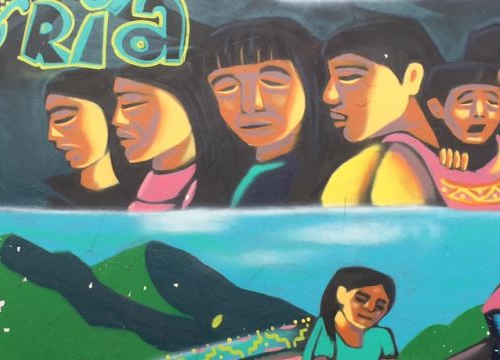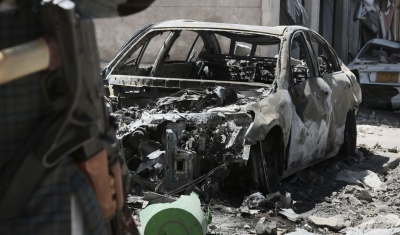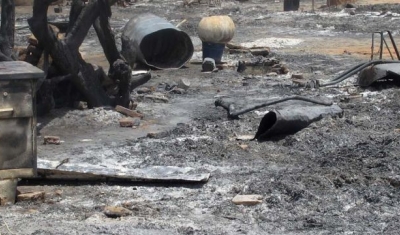Disability and Armed Conflict: Field Trip to Colombia


Alice Priddy
27 March 2017
Our researcher Alice Priddy visited Colombia last week as part of our project ‘Disability and Armed Conflict’. The project, which is being undertaken in partnership with the UN Special Rapporteur on the rights of persons with disabilities, and Handicap International, considers the application of the Convention on the Rights of Persons with Disabilities (CRPD) during and in the immediate aftermath of armed conflict.
Colombia is one of the five case study states of the project, along with Palestine, the Democratic Republic of the Congo, Ukraine and Vietnam. Research carried out in these states aims at documenting the situation of persons with disabilities during armed conflict and its aftermath and assessing the implementation of the CRPD. Our legal research aims to clarifying how the CRPD should be applied during armed conflict and how obligations of states and armed non-state actors under international humanitarian law should be interpreted in light of this relatively new treaty.
‘This project is a great opportunity to bring light to the situation of persons with disabilities during armed conflict, an issue which is often ignored, underreported or considered as a niche’ underlines Alice. ‘It is also key to ensure that states, armed non-state actors (ANSAs) and humanitarian actors adhere to this new protection scheme’ she adds.
Alice’s research in Colombia focussed on the conduct of the hostilities, the treatment of persons with disabilities interned during the conflict and the inclusion of persons with disabilities in the peace process. Alice met with numerous stakeholders including state representatives, IGOs, armed non-state actor representatives and NGOs .
Impact of the Conflict on Persons with Disabilities
Colombia is emerging from 52 years of armed conflict which has resulted in 260,000 deaths and the displacement of 6.8 million persons. Extrajudicial killings, enforced disappearances, kidnappings, sexual violence, deprivation of liberty, looting and the wide-scale use of anti-personnel mines have all been consistent features of the conflict. ‘The conflict has directly caused physical and/or psycho-social disabilities as well as exacerbated pre-existing disabilities’ underlines Alice. Accurate figures on the number of persons with disabilities in Colombia do not exist, however numerous stakeholders agreed that the number exceeds 7 million persons. Colombia ratified the CRPD in May 2011.

Deliberate Targeting of Persons with Disabilities
The violence in Colombia predominately raged in remote rural areas of the country where there was, and continues to be, little to no presence of state institutions. The remoteness and the protracted insecurity in these areas mean that there is limited external documentation of the conduct of hostilities nor the current conditions under which persons with disabilities live. Nevertheless, Alice heard several accounts of persons with disabilities being deliberately targeted during the conflict in cases of ‘false-positive’ killings, whereby persons with intellectual impairments would be coaxed to remote areas where they would be murdered and a weapon placed with them to make it look like the killing of a rebel. Alice also heard numerous reports of persons with disabilities being denied the right to flee the violence, being abandoned and being denied access to humanitarian aid.
Forced Sterilization of Women and Girls with Disabilities
Sexual violence against women and girls was perpetrated on a large scale during the conflict, including within families, as the insecurity that conflict brings facilitates a culture of impunity. Women and girls with disabilities can be forcibly sterilised under Colombian law, in violation of the CRPD. The forced sterilization of women and girls with disabilities has been linked with facilitating sexual violence within families. Alice met with campaigners who are advocating for the law to be changed to prevent women and girls being sterilized without their free and informed consent.
The Situation of Internees with Disabilites
Persons interned within the context of the armed conflict are held in separate wings of regular prisons. The prisons are not accessible for internees with disabilities and there is little attempt to ensure that they have equal access to prison facilities and the small number of rehabilitation programmes available. As part of the peace process, approximately 7,000 Revolutionary Armed Forces of Colombia (FARC) members are currently being held in 26 concentration zones across Colombia where they are disarming and demobilizing. There appears to be no screening of FARC members to assess any physical, psycho-social and/or intellectual impairments and needs, and no attempts to make the zones or the dissemination of information, including legal information, accessible to FARC members with disabilities.
Peace Talks and Post-Conflict Integration of Persons with Disabilities
In December 2016, the Colombian Government and FARC signed the Havana Peace agreement to end the conflict. The National Liberation Army (ELN) and the Colombian Government agreed to enter into peace talks in March 2016 but the talks have not yet started and violence continues. Persons with disabilities were largely excluded from the peace talks with FARC and continue to be ignored in the implementation of the peace agreement. There is optimism that persons with disabilities will be included in the peace negotiations with the ELN.
Post-conflict integration and development plans are not yet inclusive of persons with disabilities and, on the whole, persons with disabilities, particularly persons with psycho-social and intellectual impairments, remain invisible members of society.
Little Implementation of the CRPD
Although progressive legislation has been enacted and the Constitutional Court has underscored the rights of persons with disabilities and the disproportionate impact of the conflict on them, there appears to be little implementation of the CRPD in practice owing to lack of disaggregated data, lack of infrastructure and disability expertise, insecurity, as well as wide-scale corruption.
Alice will be producing a full report on her visit to Colombia which will be available on our website this summer.










